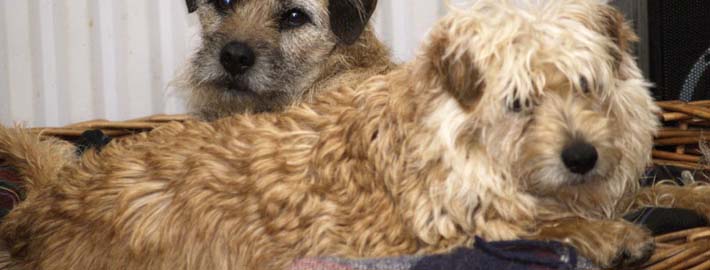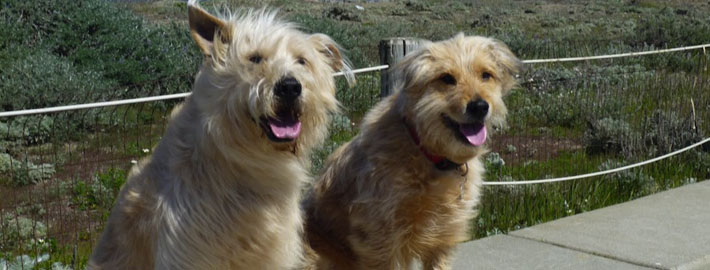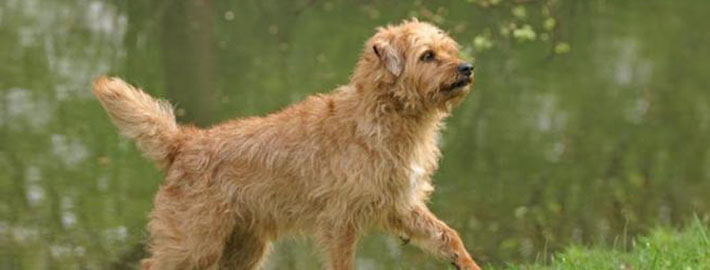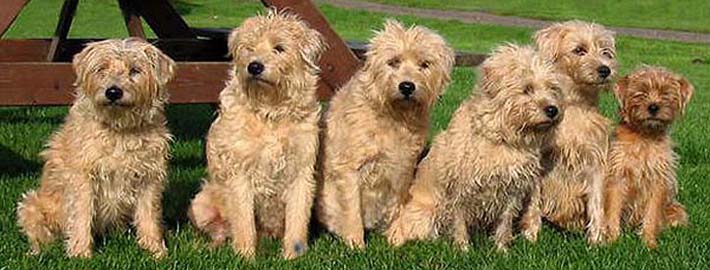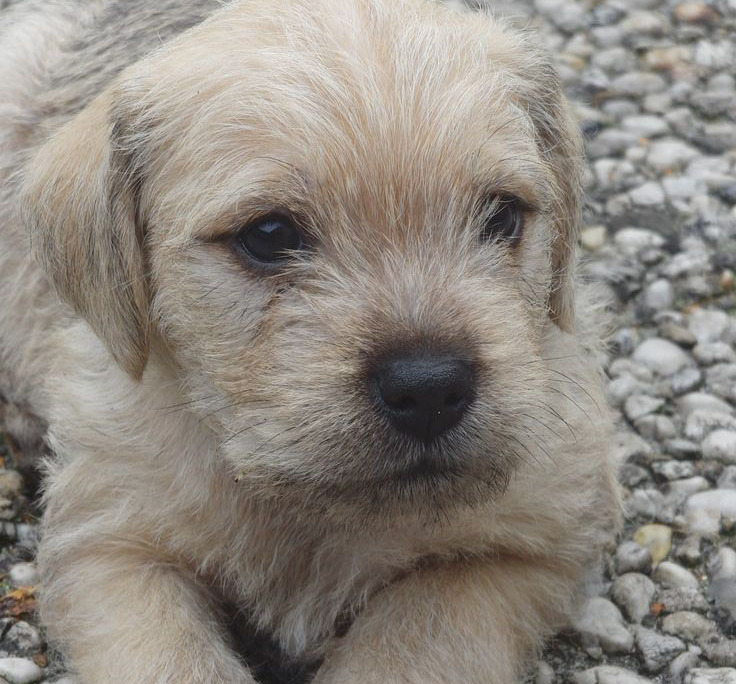What makes the Dutch Smoushond Unique?
Although most people have probably never heard of this breed, Dutch Smoushonds have been around for at least two hundred years and they make great pets.
Breed Groups
Page Contents
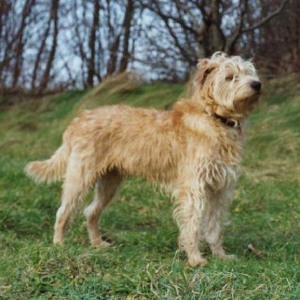
SnapShot
| Size: | Males – 35 to 42 cm (14 to 17 inches) Females – 35 to 42 cm (14 to 17 inches) |
| Weight: | Males – 9 to 10 kg (20 to 22 pounds) Females – 9 to 10 kg (20 to 22 pounds) |
| Origin: | Netherlands |
| Life Span: | 12 – 15 Years |
| Colour: | Waterproof coat is rough and shaggy, and of any shade of yellow colour |
| Litter Size: | 2 to 5 puppies |
Is the Dutch Smoushond Right For You?
Dutch Smoushonds quickly develop a deep bond with the human members of their families. Prospective owners should be aware that these dogs tend to shy away from strangers but they are energetic and affectionate amongst people that they know. Members of this friendly breed are also known for their obedience skills and their adaptability. These lively dogs will get along well in just about any living situation as long as they get enough exercise. Dutch Smoushonds are additionally quite intelligent and they can easily be trained to perform a wide variety of tricks.
In 5 Words
- Friendly
- Obedient
- Easy to care
- Skillful
- Intelligent
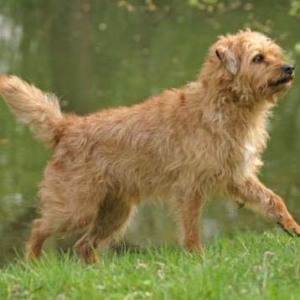
Characteristics
Learn About the Dutch Smoushond
Description
General Description
These dogs may resemble yellow coated Schnauzers but they have their own unique and untidy appearance. Dutch Smoushonds have square-shaped athletic bodies. Females of the breed are allowed to have slightly longer torsos than their male contemporaries. Dogs of both genders have short, wide heads with high-set drop ears. Dutch Smoushonds also have domed skulls, short muzzles, and strong jaws. These individuals also possess wide black noses. Dark eyes that are round in shape and large in size are yet another breed feature. Dutch Smoushonds can have scissors, undershot, or level bites but they should have all their teeth in good working order. These dogs have straight forelegs, but all their limbs are described as “moderately angulated” according to United Kennel Club breed standards. Dutch Smoushonds have black toenails on their small, round feet. These dogs should additionally possess short, undocked tails that do not curl over their backs.
Size
This is a small to medium sized dog breed that generally weighs around 20 to 22 pounds. According to United Kennel Club standards Dutch Smoushonds of both genders should be stand somewhere between 14 and 16.5 inches in height.
Coat
Members of this breed have a coarse, double layered coat that has a shaggy texture. Their fur typically measures somewhere between 1.5 to 2.5 inches in length. These dogs also have long, straight hair on their faces which forms their beards, eyebrows, and moustaches. Dutch Smoushonds additionally possess feathered forelegs and furry feet. These dogs can be any shade of yellow but straw colored animals seem to be the most common.
Short History of the Dutch Smoushond
Despite the fact that their true origins remain a mystery, it is thought that these dogs originally came from the Netherlands. Members of this breed may even be related to German Schnauzers, due to the similarities in their appearances. Dutch Smoushonds were initially employed as vermin catchers in their homeland. During the 1800s, the dogs were commonly seen as companion pets for gentlemen. However, the Second World War nearly caused the Dutch Smoushonds to go extinct. Once the war was over, breed enthusiasts attempted to improve matters but their efforts were not very successful. Fortunately, Mrs. H.M. Barkman managed to use selective breeding techniques to recreate the Dutch Smoushonds during the 1970s. While the breed is not often seen outside of its homeland, the United Kennel Club (UKC) admitted the dogs to their club in 2006.
Temperament
The modern incarnation of this historic breed was created to serve as a companion dog. Therefore, it is no surprise that Dutch Smoushonds quickly develop a deep bond with the human members of their families. Prospective owners should be aware that these dogs tend to shy away from strangers but they are energetic and affectionate amongst people that they know. Members of this friendly breed are also known for their obedience skills and their adaptability. These lively dogs will get along well in just about any living situation as long as they get enough exercise. Dutch Smoushonds are additionally quite intelligent and they can easily be trained to perform a wide variety of tricks.
Caring for Your Dutch Smoushond
General Health
Dutch Smoushonds get along best in areas with moderate to cool climates but they are generally considered to be an indoor breed. For the most part, these dogs tend to be quite healthy but there are some health problems that may arise from time to time. Joint and eye problems in particular are a major concern. Pet owners that intend to breed their dogs should also be aware females who are giving birth usually need help from a veterinarian and caesarean sections often are necessary at such times.
Care
Daily
Most dogs require regular workout sessions to prevent behavior issues and keep them from becoming overweight. Dutch Smoushounds are no exception to this rule. Members of this breed can get along just fine in apartments and other small households but they must be given sufficient exercise in the form of long daily walks. However, missing the occasional excursion shouldn’t cause any major problems for these dogs. Dutch Smoushonds also enjoy swimming and playing games. In fact, members of this breed would make good candidates for various forms of dog sports.
Weekly
Dutch Smoushonds will need to be frequently brushed with a wide tooth comb in order to keep their fur free of mats and tangles. Of course, all dogs should have their teeth cleaned on a regular basis so that they remain in good oral health. This can be accomplished using a pet approved toothbrush and toothpaste. Tooth powders or specially formulated bones may also help in this regard.
Monthly
All dogs need parasite prevention medications to keep harmful pests at bay and these products are generally administered at least once per month.
Grooming & Bathing
Although they need a weekly grooming session, Dutch Smoushonds have naturally shaggy, unkempt looking coats. Even so, any extra fur inside their ears and on the pads of their feet will need to be regularly trimmed to keep these dogs looking their best. The toenails on members of this breed should also be kept cut short so that they do not break off and injure the animal in question. Dutch Smoushonds will also need to have their fur hand plucked on a biannual basis. This can be done at home but pet owners may want to seek the services of a professional groomer instead.
Exercise & Training
Dutch Smoushonds are an intelligent breed and they quickly learn whatever their humans choose to teach them. However, these dogs need a great deal of attention and require a patient instructor when they are being trained. Prospective owners should also be aware that these dogs are particularly sensitive to human emotions. If Dutch Smoushonds are subjected to verbal abuse or other types of mistreatment, they may quickly become afraid of human beings. As is the case with any breed, positive reinforcement is a good way to encourage proper behavior.

